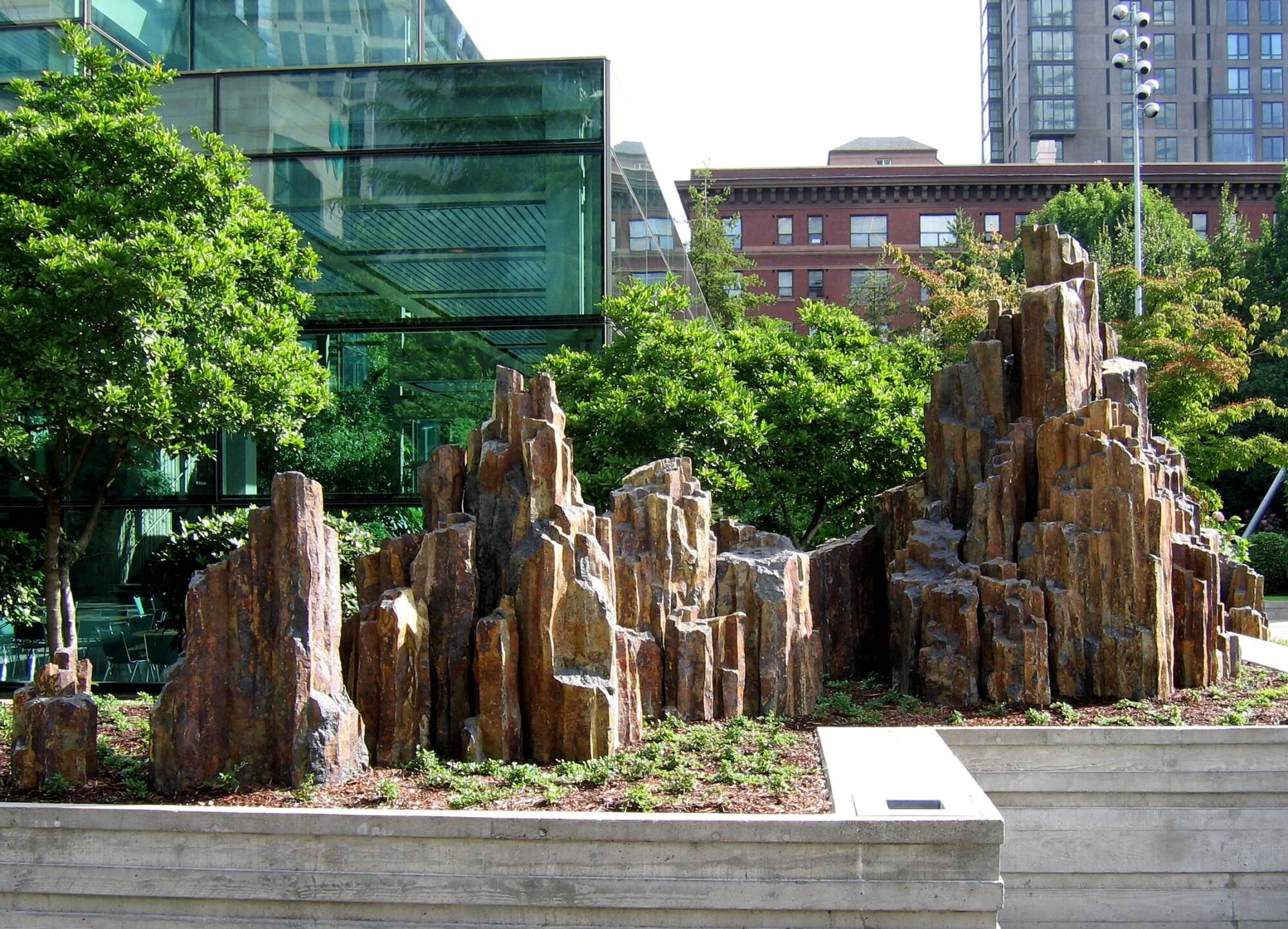“We’ve done so much with so little for so long that now we can do almost anything with nothing”
Robert Jewett atop the Beaver Canyon Quarry in March of 2004.
Beaver Canyon Quarry
Robert Jewett discovered the Beaver Canyon deposit. He ran the quarry for 15 years, and anyone who now owns or ever wants to own a piece of this wonderful and unique stone owes a debt to Bob. Still young, still full of life, he passed away in 2015. We muddled along for a few more years but closed the quarry in 2019. His ready smile is sorely missed.
A Most Unusual Stone
Geologic History of the Beaver Canyon Occurrence
Around 45 million years ago, give or take a smidge, lava of the Klondike Mountain Formation poured into a down faulted block of Earth known as the Torada Creek Graben, situated in what is today the Okanogan Highlands region of north central Washington State. This occurred near the beginning of the Tertiary period, the first age of the Cenozoic Era. As is typical at the changing of the great geologic Eras there was widespread crustal violence. The Mesozoic Era, the age of the reptiles, had just ended, and the Earth was rocked by great upheavals which often brings vulcanism of one sort or another. One can imagine that the valley into which the lava flowed was, in the beginning, a peaceful place, but as the eruptions gathered force and continued poring lava flows, one on top of another, the valley became a barren landscape filled with a smoldering molten mass. Slowly, taking hundreds, or even thousands of years, this pile of flows cooled, and began crystallizing.
As the lava solidified it shrank, settled and cracked, causing the stone to develop, in varying degrees, what we call columnar jointing patterns, a typical feature of basic volcanic rocks producing the stone spires known as basalt columns, which are very common and widespread all over this planet. But, in one small area, known today as Beaver Canyon, something very unusual occurred. Rare and near perfect circumstances related to localized cooling conditions and special lithologic variations of the vitric andesitic lava resulted in the formation of unusually small, but perfectly formed, exceptionally long basalt columns, a rarity of nature that this geologist has never seen before developed in this extrodinaryfashion.

Eventually the ancient volcanoes ceased erupting and the valley became a steaming cauldron of hydrothermal activity, a landscape of geysers and bubbling mud, much like what one sees in Yellowstone park today. And as the intensity of the volcanic fires subsided hot fluids seeped upwards along channels in the Earth. A variety of minerals precipitated upon all the joints and fractures of the Beaver Canyon lava flows creating the vibrant colors these columns are noted for.
And so we find, etched of upon the surface of each column, the lines and intricate patterns of color that record the detailed minutia of this geologic journey from fiery throat of a Tertiary volcano to, perhaps, a garden, an entry way, an office, or possibly somewhere within a home as a feature, wet or dry, providing only serenity and warmth.




Quarrying the Columns
The Beaver Canyon columns average around 3 1/2 inches in diameter. In the quarry face individual column length often exceeds 20 feet, but cross fracturing and the necessary violence of the blasting process limits the length of columns one can practically quarry. Drilling a series of holes and blasting is a touchy business fraught with guess work. In this process a mass of columns normally detaches from the face and spills onto the quarry floor. As you might imagine there is a lot of breakage, but surprisingly, depending on many factors, a substantial number of columns often survive this callous treatment.





After The Blasts
First the blasted pile is sorted through and any survivors worth the trouble are loaded by hand onto trucks and hauled down the mountain to the processing yard. A decent blast typically yields columns predominantly in the 16 to 36 inch range with a few over 40 inches in length and a rarer few over 60 inches in length. Many of the longest columns are won by careful prying of loosened columns that still remain on the high-wall.

The columns and blocks of Beaver Canyon Columns are hauled from the quarry to a processing facility about 12 miles distant. The road from the quarry to the highway is steep and primitive. Considering the rough handling involved in blasting, sorting, and hauling the columns, most weak, highly fractured, or suspect stone is eliminated. Still, to drill these small diameter columns is a highly specialized operation and only a select few of those quarried are suitable for drilling. To drill columns 40 inches or longer requires a unique proprietary process, special machines that I have developed… and lots of experience. We have successfully drilled columns up to 85 inches in length, and I have plans to drill a few extremely rare and extraordinary columns in my private stock that range in length to over 95 inches. These longer columns are singularly beautiful, truly exotic, and create world-class, one-of-kind, rare, and very, very expensive features, wet or dry.
Though the quarry was closed in 2019 and the source of these columns is no longer available, we stockpiled a rather substantial inventory that is now being carefully used to create special features and unique products. However, the supply is limited, and so the rarity of the columns will certainly rise over time. I took special pains over the years to set aside some of the most unusual, appealing, sound and striking columns. These columns are the best of the best, and it is from this stock that I now draw the stone I use for my commissioned and custom features.




























